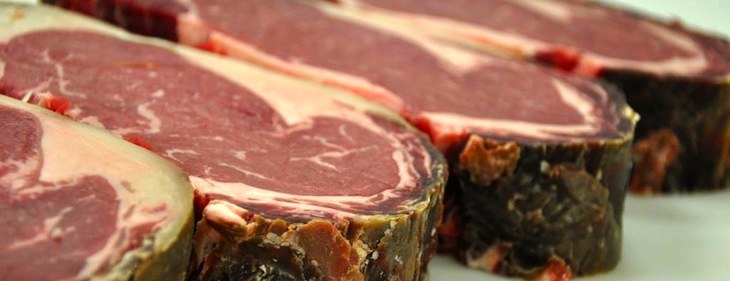Beef business likely booming for Tyson Foods, weaker markets for chicken and pork
by April 16, 2018 6:18 pm 726 views

Times are good for Tyson Foods’ beef business. Cattle supplies continue to rise, packers have plenty of livestock, and domestic and export demand has held strong, according to Derrell Peel, livestock marketing specialist at the University of Oklahoma Extension.
He told Talk Business & Politics beef production is up about 1.5% this year with total production expected to rise 5% over the course of the year compared to 2017. Peel said beef is holding up well against weaker chicken and pork markets.
Sterling Beef Profit Tracker reports that packers posted profits of $174.10 per head processed last week, about $100 more than a year ago. Packers have year-to-date averaged about $118 per head slaughtered, up nearly 12% from the same period last year.
Box beef prices (wholesale cuts) have been strong for packers which has led to a slight uptick in retail Choice beef prices last month. Peel said Choice retail beef averaged $5.87 per pound last month, up from $5.82 the month prior and flat against a year ago. The All Fresh beef retail price jumped to $5.59 a pound, up from $5.53 in February and 0.9% higher than a year ago.
Peel said packers are able to enjoy healthy profit margins as long as demand stays steady. He said with beef production expected to to rise 5% this year there could be some bargains for consumers at retail this summer.
“Late May and June is the highest slaughter time for the industry and with fat margins packers will no doubt take advantage. This could lead to some values for consumers as more meat comes to market. Chicken production is expected to be up 2% and pork production is forecast at 4% growth this year and that’s a good bit more meat for consumers to eat,” Peel said. “It will get eaten, but we don’t know how long prices will stay up with more meat on the market.”
Pork margins have not been as good for packers like Tyson Foods. Sterling reported average packer margins at $19 per head, down from $25.25 a year ago. There has been more volatility in pork margins than in beef. Last week, packer margins were $24.97, down from $37.75 the previous week and up from $17.57 last month.
Peel said retail pork prices averaged $1.50 per pound in March, down 0.7% from a year ago and up slightly from the prior month. Broiler (chicken) prices are also under pressure amid overproduction which has sent more chicken to the freezer in recent months. He said wing prices have been weak year-over-year and overall broiler prices at retail are low and exports are soft compared to production gains.
“The ratio of retail beef price to both pork and broiler continues to hold strong despite growing supplies of beef, pork and poultry. Production of beef, pork and broilers are all expected to be record large in 2018 leading to record large total meat supplies of nearly 103 billion pounds, up 3.3% year over year. This includes other chicken, turkey, lamb and mutton and veal production,” Peel said.
He said net meat exports are projected to move about 12% of the total production, which will hold per capita domestic meat consumption to 219.4 pounds. This is up 1.3 pounds from last year and a high consumption level since 2007 recession, but still lower than the record 221.9 pounds recorded in 2004.
Peel said domestic and international demand growth is needed this year to help minimize the supply pressure on meat prices for packers and growers. He said trade tariffs also are causing future’s price volatility which have a bearing on prices and profitability for packers.
PROPOSED PORK TARIFF
Moody’s Investor Services reported Monday that China’s proposed tariffs on U.S. pork exports would reduce demand from China and cause U.S. pork supplies to grow, leading to depressed prices.
“The lower pork prices that would result from a tariff would hurt hog and pork sales, but drive packaged meat margins higher – a boost to pork-based packaged food manufacturers. The largest processors, including Smithfield Foods, Tyson Foods, Hormel Foods Corporation and JBS U.S., would experience a modest impact if the tariffs are enacted,” noted Brian Weddington of Moody’s.
He said because of its single-protein focus, Smithfield likely would be affected more than diversified packers like Tyson Foods, at least initially. He said oversupply of hogs lead to losses for hog growers in recent years. If China imposes tariffs on U.S pork, growers who expanded operations to feed China’s demand in will bleed red ink.
Weddington said U.S. packers have shifted pork sales to other countries as China’s domestic pork prices have been a tough comparison for U.S. pork.
Tyson reported pork exports sales of $971 million last year. Japan accounted for 35% and was the largest buyer of pork from Tyson among other export countries. Mexico was second with 21% of the sales and China and Hong Kong were third with 15% of export sales. Canada accounted for 10%, and South Korea 4%.
